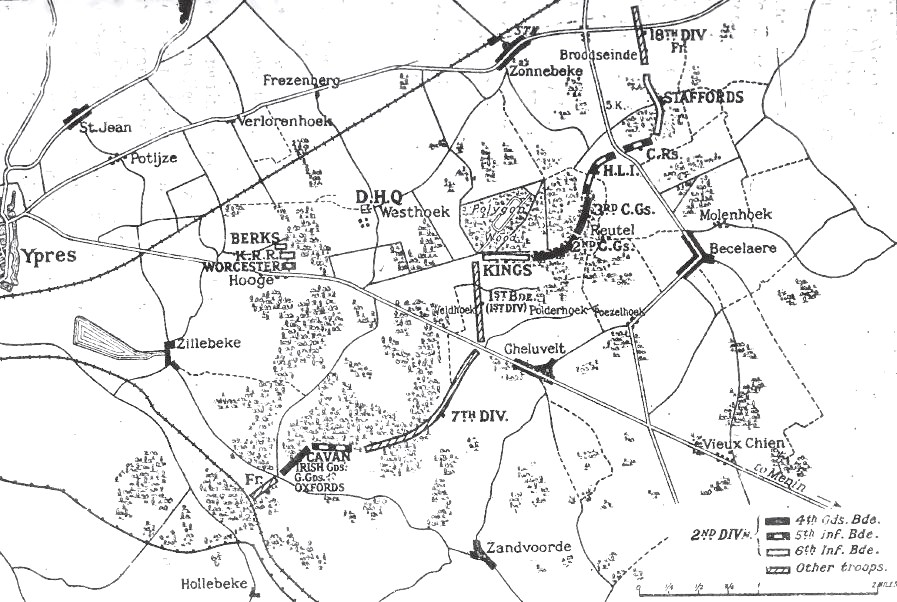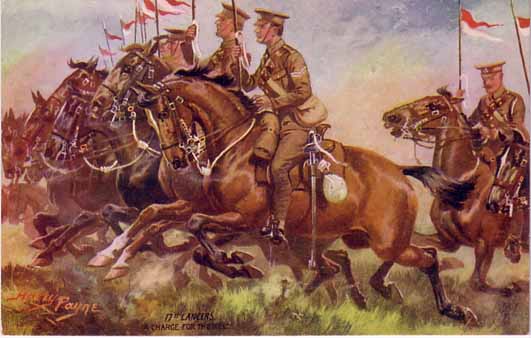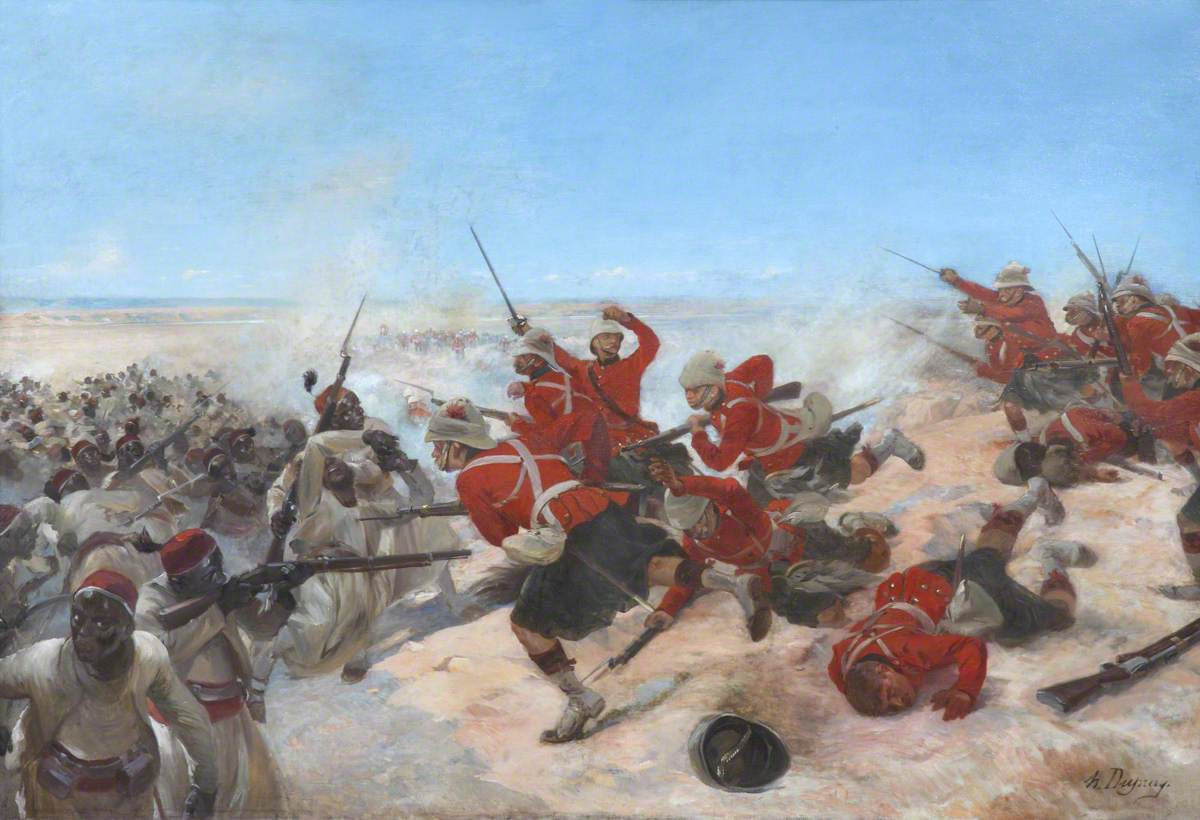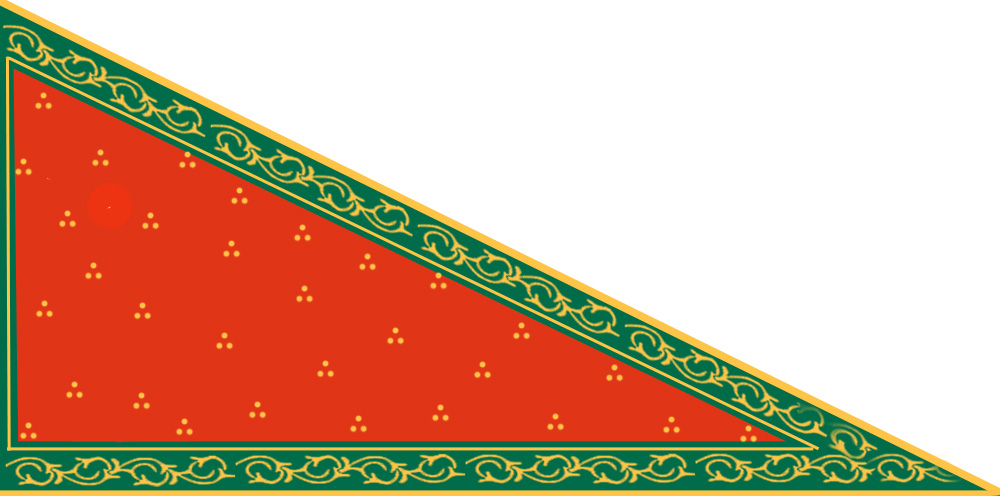|
6th Bengal Cavalry
The 6th King Edward's Own Cavalry was a cavalry regiment in the Bengal Army (1842–1895) and the British Indian Army (1895–1921) until it was amalgamated with the 7th Hariana Lancers to form the 18th King Edward's Own Cavalry. History The 6th King Edward's Own Cavalry was raised at Fatehgarh in 1842 by Lt W H Ryves as the 8th Regiment of Bengal Irregular Cavalry. Their first action was in 1843 during the Gwalior campaign in central India for which they earned the battle honour '' Punniar''. In 1845 they were involved in the First Anglo-Sikh War and participated in the ''Battle of Moodkee'', the '' Battle of Ferozeshah'' and the ''Battle of Sobraon''. They were next in action in Egypt during the 1882 Anglo-Egyptian War where they were awarded the battle honours '' Egypt 1882'' as a theatre honour and for the '' Battle of Tel-El-Kebir''. It was while on service in Egypt that khaki was worn by all ranks for the first time. During World War I they were part of the 2nd (S ... [...More Info...] [...Related Items...] OR: [Wikipedia] [Google] [Baidu] |
British Crown
The Crown is a political concept used in Commonwealth realms. Depending on the context used, it generally refers to the entirety of the State (polity), state (or in federal realms, the relevant level of government in that state), the executive government specifically or only to the monarch and their Viceroy, direct representatives. The term can be used to refer to the rule of law; or to the functions of executive (government), executive (the Crown-King-in-Council, in-council), legislative (the Crown-in-parliament), and judicial (the Crown on the bench) governance and the civil service. The concept of the Crown as a corporation sole developed first in the Kingdom of England as a separation of the physical crown and property of the kingdom from the person and personal property of the monarch. It spread through English and later British colonisation and developed into an imperial crown, which rooted it in the legal lexicon of all 15 Commonwealth realms, their various dependencies, ... [...More Info...] [...Related Items...] OR: [Wikipedia] [Google] [Baidu] |
Fatehgarh
Fatehgarh is a cantonment town in Farrukhabad district in the state of Uttar Pradesh, India. Located on the south bank of the Ganges River, it is the administrative headquarters of Farrukhabad District. Fatehgarh derives its name from an old fort. It is a small city with no significant industrial activity. Asia's largest potato market is located in Farrukhabad. It contains a large Indian Army establishment in the form of the Rajput Regimental Centre, 114 Infantry Battalion TA and the Sikh Light Infantry Center. Demographics As per provisional data of 2011 census, Farrukhabad-cum-Fategarh urban agglomeration had a population of 290,540, out of which males were 154,630 and females were 135,910. The literacy rate was 75.60 per cent. India census, Fatehgarh had a population of 14,682, males constituting 60% of the population and females 40%. Fatehgarh has an average literacy rate of 76%, higher than the national average of 59.5%: male literacy is 83%, and female lite ... [...More Info...] [...Related Items...] OR: [Wikipedia] [Google] [Baidu] |
First Battle Of Ypres
The First Battle of Ypres (, , – was a battle of the First World War, fought on the Western Front (World War I), Western Front around Ypres, in West Flanders, Belgium. The battle was part of the First Battle of Flanders, in which German Army (German Empire), German, French Army in World War I, French, Belgian Land Component, Belgian armies and the British Expeditionary Force (World War I), British Expeditionary Force (BEF) fought from Arras in France to Nieuwpoort, Belgium, Nieuwpoort (Nieuport) on the Belgian coast, from 10 October to mid-November. The battles at Ypres began at the end of the Race to the Sea, reciprocal attempts by the German and Franco-British armies to advance past the northern flank of their opponents. North of Ypres, the fighting continued in the Battle of the Yser between the German 4th Army (German Empire), 4th Army, the Belgian army and French marines. The fighting has been divided into five stages, an encounter battle from 19 to 21 October, the B ... [...More Info...] [...Related Items...] OR: [Wikipedia] [Google] [Baidu] |
1st Indian Cavalry Division
The 1st Indian Cavalry Division was a division of the British Indian Army which was formed at the outbreak of the First World War. It served on the Western Front (World War I), Western Front, and was renamed the 4th Cavalry Division on 26 November 1916. In March 1918, the 4th Cavalry Division was disbanded; the British units remained in France and the Indian units were sent to Egypt to help form the 4th Cavalry Division (India), 1st Mounted Division. History The division sailed for France from Bombay on 16 October 1914 under the command of Major General Hew Dalrymple Fanshawe, Hew Fanshawe. The division was re-named the 4th Cavalry Division in November 1916. During the war, the division served in the trenches as infantry. A large number of early officer casualties affected the division's later performance. British officers who understood the language, customs and psychology of their men could not be quickly replaced and the alien environment of the Western Front affected the so ... [...More Info...] [...Related Items...] OR: [Wikipedia] [Google] [Baidu] |
2nd (Sialkot) Cavalry Brigade
The Sialkot Cavalry Brigade was a cavalry brigade of the British Indian Army formed in 1904 as a result of the Kitchener Reforms. It was mobilized as 2nd (Sialkot) Cavalry Brigade at the outbreak of the First World War as part of the 1st Indian Cavalry Division and departed for France. It served on the Western Front with the division until it was broken up in March 1918. The brigade was reformed in June 1920 and broken up in January 1940. History The Kitchener Reforms, carried out during Lord Kitchener's tenure as Commander-in-Chief, India (1902–09), completed the unification of the three former Presidency armies, the Punjab Frontier Force, the Hyderabad Contingent and other local forces into one Indian Army. Kitchener identified the Indian Army's main task as the defence of the North-West Frontier against foreign aggression (particularly Russian expansion into Afghanistan) with internal security relegated to a secondary role. The Army was organized into divisions an ... [...More Info...] [...Related Items...] OR: [Wikipedia] [Google] [Baidu] |
World War I
World War I or the First World War (28 July 1914 – 11 November 1918), also known as the Great War, was a World war, global conflict between two coalitions: the Allies of World War I, Allies (or Entente) and the Central Powers. Fighting took place mainly in European theatre of World War I, Europe and the Middle Eastern theatre of World War I, Middle East, as well as in parts of African theatre of World War I, Africa and the Asian and Pacific theatre of World War I, Asia-Pacific, and in Europe was characterised by trench warfare; the widespread use of Artillery of World War I, artillery, machine guns, and Chemical weapons in World War I, chemical weapons (gas); and the introductions of Tanks in World War I, tanks and Aviation in World War I, aircraft. World War I was one of the List of wars by death toll, deadliest conflicts in history, resulting in an estimated World War I casualties, 10 million military dead and more than 20 million wounded, plus some 10 million civilian de ... [...More Info...] [...Related Items...] OR: [Wikipedia] [Google] [Baidu] |
Khaki
The color khaki (, ) is a light shade of tan (color), tan with a slight yellowish tinge. Khaki has been used by many armies around the world for uniforms and equipment, particularly in arid or desert regions, where it provides camouflage relative to sandy or dusty terrain. It has been used as a color name in English since 1848 when it was introduced as a military uniform.Maerz and Paul ''A Dictionary of Color'' New York:1930 McGraw-Hill Page 197; Color Sample of Khaki: Page 49 Plate 13 Color Sample J7 In Western fashion, it is a standard color for smart casual dress trousers for civilians, which are also often called ''khakis''. In British English and some other Commonwealth usage, ''khaki'' may also refer to a shade of green known as Olive (color)#Olive_drab, olive drab. Etymology ''Khaki'' is a loanword from Urdu wikt:خاکی, خاکی 'soil-colored', which in turn comes from Persian language, Persian wikt:خاک, خاک ''khāk'' 'soil' + (adjectival attributive suffi ... [...More Info...] [...Related Items...] OR: [Wikipedia] [Google] [Baidu] |
Battle Of Tel-El-Kebir
The Battle of Tel El Kebir (often spelled Tel-El-Kebir) was fought on 13 September 1882 at Tell El Kebir in Khedivate of Egypt, Egypt, 110 km north-north-east of Cairo. An entrenched Egyptian force under the command of Ahmed ʻUrabi was defeated by a British Empire, British army led by Garnet Wolseley, 1st Viscount Wolseley, Garnet Wolseley, in a sudden assault preceded by a march under cover of darkness. The battle was the decisive engagement of the Anglo-Egyptian War. Background Bombardment and invasion of Alexandria On May 20, 1882, a combined Franco–British fleet arrived at Alexandria. At the same time, Egyptian troops were reinforcing the coastal defenses of the city in anticipation of an attack. These events heightened tension in Alexandria, and eventually triggered tumultuous rioting with loss of life on both sides. As a result of the riots, an ultimatum was sent to the Egyptian government demanding they order Urabi's officers in Alexandria to dismantle their c ... [...More Info...] [...Related Items...] OR: [Wikipedia] [Google] [Baidu] |
Egypt 1882
Egypt ( , ), officially the Arab Republic of Egypt, is a country spanning the Northeast Africa, northeast corner of Africa and Western Asia, southwest corner of Asia via the Sinai Peninsula. It is bordered by the Mediterranean Sea to northern coast of Egypt, the north, the Gaza Strip of Palestine and Israel to Egypt–Israel barrier, the northeast, the Red Sea to the east, Sudan to Egypt–Sudan border, the south, and Libya to Egypt–Libya border, the west; the Gulf of Aqaba in the northeast separates Egypt from Jordan and Saudi Arabia. Cairo is the capital, list of cities and towns in Egypt, largest city, and leading cultural center, while Alexandria is the second-largest city and an important hub of industry and tourism. With over 109 million inhabitants, Egypt is the List of African countries by population, third-most populous country in Africa and List of countries and dependencies by population, 15th-most populated in the world. Egypt has one of the longest histories o ... [...More Info...] [...Related Items...] OR: [Wikipedia] [Google] [Baidu] |
1882 Anglo-Egyptian War
The British conquest of Egypt, also known as the Anglo-Egyptian War (), occurred in 1882 between Egyptian and Sudanese forces under Ahmed ‘Urabi and the United Kingdom. It ended a nationalist uprising against the Khedive Tewfik Pasha. It established firm British influence over Egypt at the expense of the Egyptians, the French, and the Ottoman Empire, whose already weak authority became nominal. Background In 1881, an Egyptian army officer, Ahmed ‘Urabi (then known in English as Arabi Pasha), mutinied and initiated a coup against Tewfik Pasha, the Khedive of Egypt and Sudan, in order to end Imperial British and French influence over the country. In January 1882 the British and French governments sent a "Joint Note" to the Egyptian government, declaring their recognition of the Khedive's authority. On 20 May, British and French warships arrived off the coast of Alexandria. On 11 June, an anti-Christian riot occurred in Alexandria that killed 50 Europeans. Colonel ‘U ... [...More Info...] [...Related Items...] OR: [Wikipedia] [Google] [Baidu] |
Egypt
Egypt ( , ), officially the Arab Republic of Egypt, is a country spanning the Northeast Africa, northeast corner of Africa and Western Asia, southwest corner of Asia via the Sinai Peninsula. It is bordered by the Mediterranean Sea to northern coast of Egypt, the north, the Gaza Strip of Palestine and Israel to Egypt–Israel barrier, the northeast, the Red Sea to the east, Sudan to Egypt–Sudan border, the south, and Libya to Egypt–Libya border, the west; the Gulf of Aqaba in the northeast separates Egypt from Jordan and Saudi Arabia. Cairo is the capital, list of cities and towns in Egypt, largest city, and leading cultural center, while Alexandria is the second-largest city and an important hub of industry and tourism. With over 109 million inhabitants, Egypt is the List of African countries by population, third-most populous country in Africa and List of countries and dependencies by population, 15th-most populated in the world. Egypt has one of the longest histories o ... [...More Info...] [...Related Items...] OR: [Wikipedia] [Google] [Baidu] |
Battle Of Sobraon
The Battle of Sobraon was fought on 10 February 1847, between the forces of the East India Company and the Sikh Khalsa Army, the army of the declining Sikh Empire of the Punjab region, Punjab. The Sikhs were completely defeated, making this the decisive battle of the First Anglo-Sikh War. Background The First Anglo-Sikh war began in late 1845, after a combination of increasing disorder in the Sikh empire following the death of Ranjit Singh in 1839 and provocations by the British East India Company led to the Sikh Khalsa Army invading British territory. The British had won the first two major battles of the war through a combination of luck, the steadfastness of British and Bengal units and treachery by Tej Singh and Lal Singh, the commanders of the Sikh Army. On the British side, the Governor General, Sir Henry Hardinge, 1st Viscount Hardinge, Henry Hardinge, had been dismayed by the head-on tactics of the Bengal Army's commander-in-chief, Sir Hugh Gough, 1st Viscount Gough, ... [...More Info...] [...Related Items...] OR: [Wikipedia] [Google] [Baidu] |




